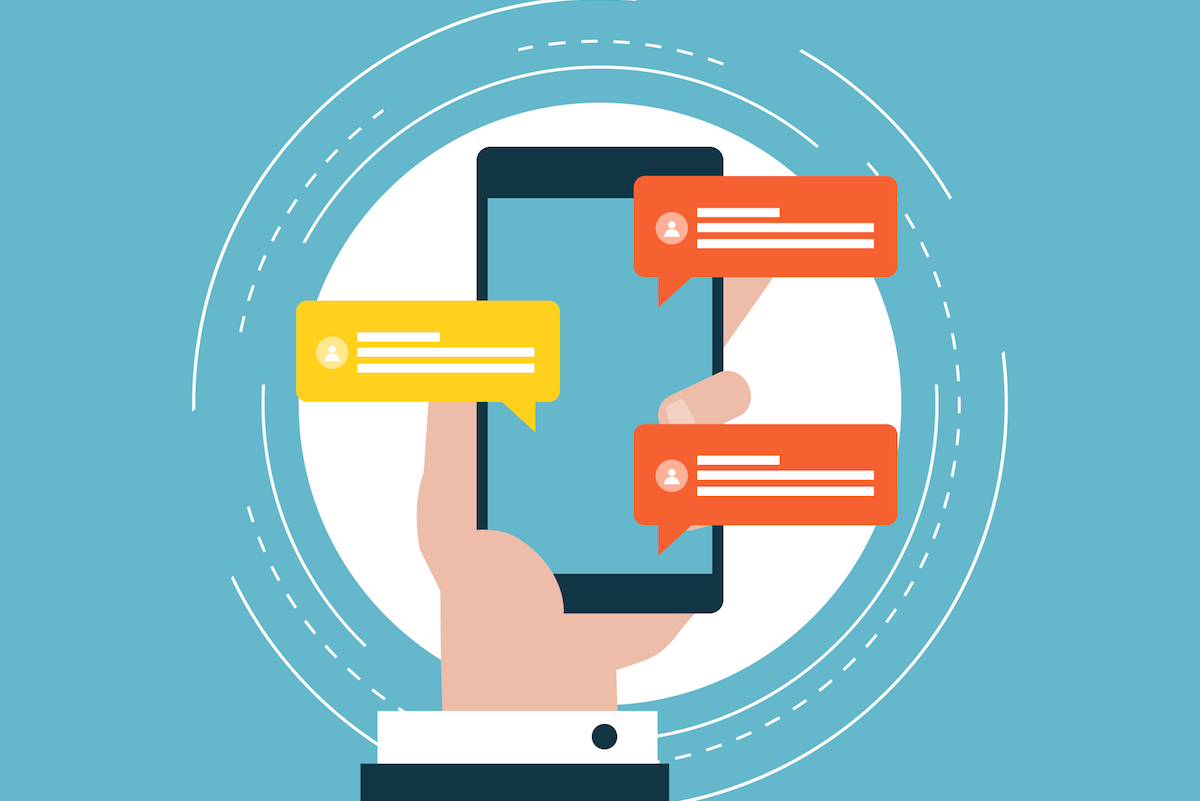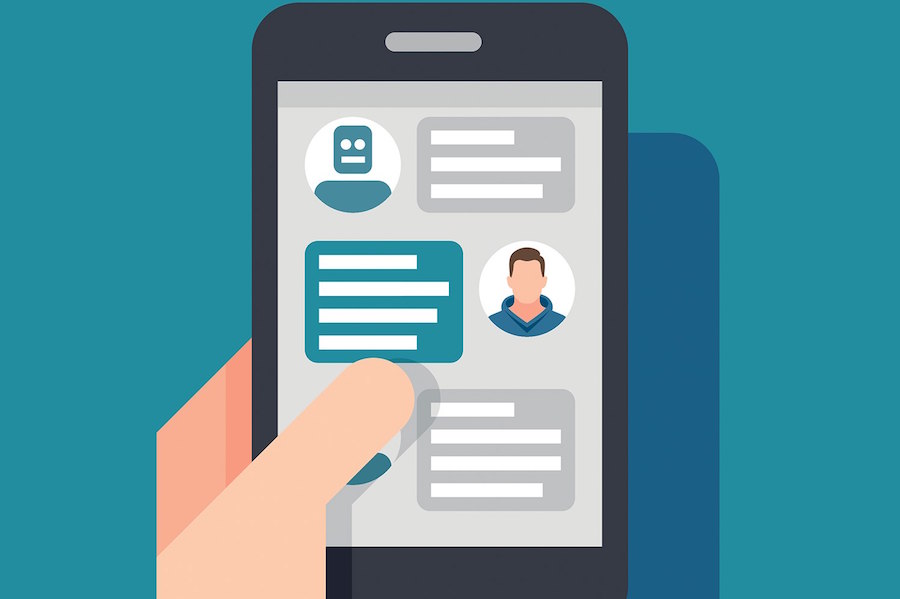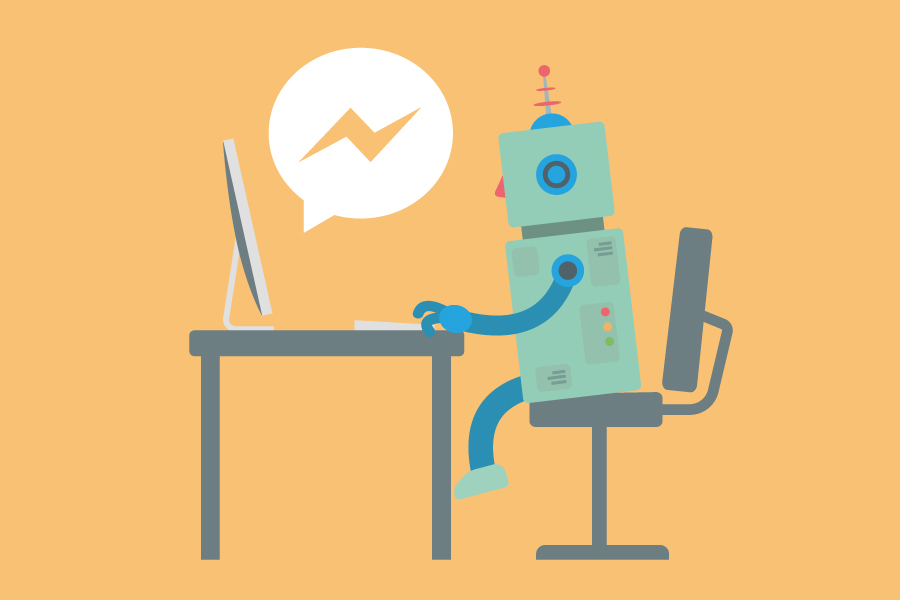
Chatbots are a bit of a trend du jour in the digital world.
Facebook uses them in conjunction with Messenger. Amazon uses them with its other AI, Echo. Same for Google (Allo).
SaaS companies like Slack use them internally (@slackbot) to help answer questions and find content or messages. Even big commerce brands like Nike use them (WeChat) for customer support.
But the real question is: Should you use them?
The short answer is probably not.
Having one isn’t necessarily bad for business, it’s just that it’s not always worth it, especially if you’re dropping big money to get one.
Here are a few reasons why you really don’t need a chatbot, and what to focus on instead.

The Trouble with Chatbots
Let’s cut to the chase: The real issue with chatbots is that the technology just doesn’t live up to the hype. Not yet, anyway.
Chatbots are simple AI systems that you interact with via text. These interactions can be as straightforward as asking a bot to give you a weather report, or something more complex like having one troubleshoot a problem with your Internet service.
Facebook, for example, integrated peer-to-peer payments into Messenger back in 2015, and then launched a full chatbot API so businesses could create interactions for customers that occur in the Facebook Messenger app.
But their chatbot API ultimately failed.
According to one report, Facebook’s chatbots could only fulfill 30% of requests without a human stepping in, and they had a “70% failure rate” overall.
They did “patch” the issue, in a way, by creating a user interface for their chatbot that would use preset phrases to assist customers.
Now they offer up suggestions, like “what’s on sale.” This involves less AI and more dialogue, which helps mitigate some of the challenges. But ultimately, it’s still not an ideal solution, especially for a company like Facebook.
Why the Technology Isn’t Good Enough for You
Of course, despite the technology challenges, companies are still using chatbots. They haven’t got away and probably won’t anytime soon.
And the ones with simpler AI do have some functionality. Does that mean it’s okay to use a simple chatbot to improve your site?
Maybe. Maybe not.
You might be able to get away with it if your use case is either extremely simple or you have access to a large corpus of structured data that the bot will be able to understand (chatbots need a lot of data to really function well).
To be honest, you probably don’t have either of those things.
Even if you did, there’s no guarantee that your bot will do much good for you. According to Forrester, most bots aren’t ready to handle the complexities of conversation, and they still depend on human intervention to succeed.
The problem is that chatbots depend on core technology like natural language processing, artificial intelligence, and machine learning, which, while improving, are still decades away from being truly robust.
Another big challenge causing the slow growth of chatbots is accuracy.
A poll conducted in 2016 (of 500 Millennials ages 18 to 34) found that 55% of those surveyed said accuracy in understanding a request was their biggest issue when using a chatbot.
28% of pollsters said they wanted chatbots to hold a more human-like, natural conversation, and 12% said they found it challenging to get a human customer service rep on the phone if the chatbot couldn’t fill their need.
As few as 4% even wanted to see more chatbots.
There’s really more of a curiosity about using chatbots than a real practical need for them.
For the most part, the demand just isn’t there yet. And even for sites that are using chatbots, the technology is still a little too underdeveloped to bring significant impact.
At the end of the day, you’re probably better off outsourcing your customer service and other requests to a human service rather than using a chatbot.

But What If You Really, Really Want One?
If you’re still excited at the idea of using a chatbot, there are a few things you will need to know before you build one (or hire a “chatbot-as-a-service” company).
You need to really organize your own site and gather as much structured data as possible, especially if you’re a retail site.
1. Find the data.
Tech giants like Google, Facebook, and Amazon build their AI with plenty of data, some that they collect from their users, some that they find in other places. You will need to mine as much data as possible, including internal and external data.
2. Add structure.
Data isn’t meaningful until it has structure. If you don’t already have the structure on your site to support a chatbot, you will want to add it.
This includes:
- Clearing product categorization so the chatbot can navigate properly
- Organizing product matrices to avoid duplicative products or pages
- Making sure all product page and landing page information is up to date
- Creating short and conversational descriptions tailored to a chatbot experience
3. Choose chatbot software
Look, you’re probably not going to want to build your own chatbot. The process is complicated enough, even for companies that specialize in AI and chat. Outsource this if you’re going to do it right.
Final Thoughts
Remember that none of this is a guarantee that your chatbot will be a success. You might add some functionality to your site (or at the very least, some “cool” factor), but don’t expect it to revolutionize your business just yet.
While technologies in language processing and AI are improving, they’re still not to the point where having a chatbot will make too much of a difference.
Bots just aren’t humans. Don’t expect them to be.
If you really want to improve your offering, focus on getting structured data from your site that will help you make better marketing decisions that will better serve your customers.
You must be logged in to post a comment.